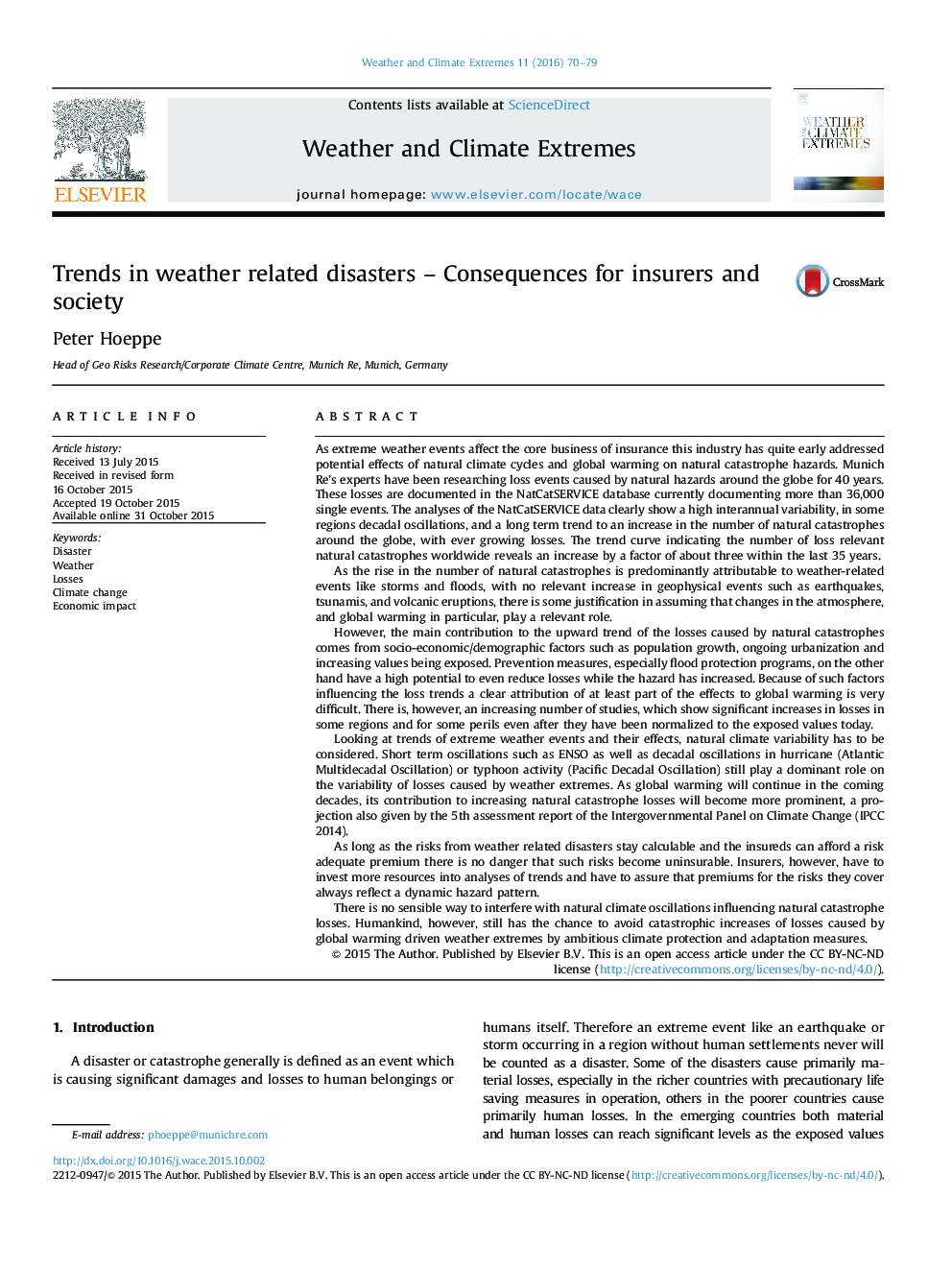| کد مقاله | کد نشریه | سال انتشار | مقاله انگلیسی | نسخه تمام متن |
|---|---|---|---|---|
| 1066660 | 1485946 | 2016 | 10 صفحه PDF | دانلود رایگان |
As extreme weather events affect the core business of insurance this industry has quite early addressed potential effects of natural climate cycles and global warming on natural catastrophe hazards. Munich Re’s experts have been researching loss events caused by natural hazards around the globe for 40 years. These losses are documented in the NatCatSERVICE database currently documenting more than 36,000 single events. The analyses of the NatCatSERVICE data clearly show a high interannual variability, in some regions decadal oscillations, and a long term trend to an increase in the number of natural catastrophes around the globe, with ever growing losses. The trend curve indicating the number of loss relevant natural catastrophes worldwide reveals an increase by a factor of about three within the last 35 years.As the rise in the number of natural catastrophes is predominantly attributable to weather-related events like storms and floods, with no relevant increase in geophysical events such as earthquakes, tsunamis, and volcanic eruptions, there is some justification in assuming that changes in the atmosphere, and global warming in particular, play a relevant role.However, the main contribution to the upward trend of the losses caused by natural catastrophes comes from socio-economic/demographic factors such as population growth, ongoing urbanization and increasing values being exposed. Prevention measures, especially flood protection programs, on the other hand have a high potential to even reduce losses while the hazard has increased. Because of such factors influencing the loss trends a clear attribution of at least part of the effects to global warming is very difficult. There is, however, an increasing number of studies, which show significant increases in losses in some regions and for some perils even after they have been normalized to the exposed values today.Looking at trends of extreme weather events and their effects, natural climate variability has to be considered. Short term oscillations such as ENSO as well as decadal oscillations in hurricane (Atlantic Multidecadal Oscillation) or typhoon activity (Pacific Decadal Oscillation) still play a dominant role on the variability of losses caused by weather extremes. As global warming will continue in the coming decades, its contribution to increasing natural catastrophe losses will become more prominent, a projection also given by the 5th assessment report of the Intergovernmental Panel on Climate Change (IPCC 2014).As long as the risks from weather related disasters stay calculable and the insureds can afford a risk adequate premium there is no danger that such risks become uninsurable. Insurers, however, have to invest more resources into analyses of trends and have to assure that premiums for the risks they cover always reflect a dynamic hazard pattern.There is no sensible way to interfere with natural climate oscillations influencing natural catastrophe losses. Humankind, however, still has the chance to avoid catastrophic increases of losses caused by global warming driven weather extremes by ambitious climate protection and adaptation measures.
Journal: Weather and Climate Extremes - Volume 11, March 2016, Pages 70–79
